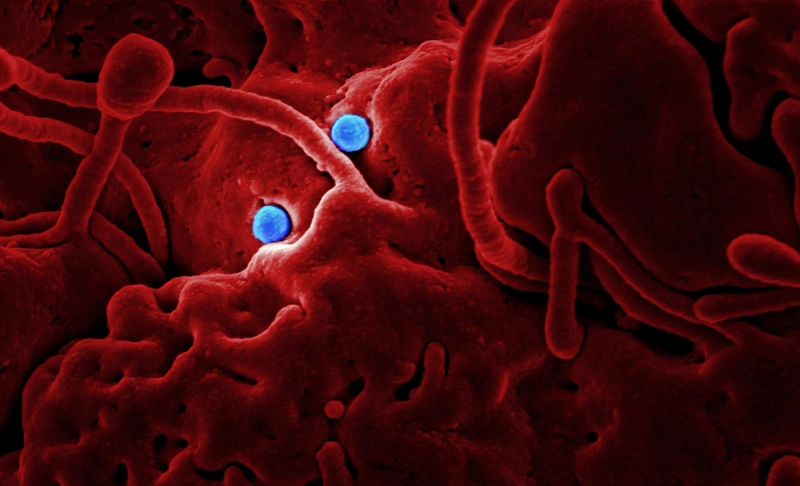By: Laura Vitelli
January 4 2023
False: Viruses do not exist, and diseases are just the body's response to toxins in the environment.

The Verdict False
Viruses have been definitively proven to exist. There is an immense amount of evidence to support the germ theory of disease.
Context
A clip from a 2009 interview with renowned "raw foods" activist Aajonus Vonderplanitz on Superhuman Radio (SHR) has been shared on social media, with Vonderplanitz suggesting that viruses aren't real. SHR is a radio network dedicated to "health, fitness, and nutrition." Throughout the interview, Vonderplanitz makes many demonstrably false claims regarding the origins of disease and illness, as well as numerous errors regarding human biology and historical disease outbreaks. These claims amount to an outright denial of the germ theory of disease. Later in the interview, Vonderplanitz moves on to anti-vaccine claims.
In Fact
In the interview, Vonderplanitz claims that diseases such as the common cold are bacterial infections in which the bacterial "janitors" of the body break down tissue that has been damaged by accumulated environmental toxins, such as those found in agricultural pesticides and food preservatives. More severe diseases such as the flu are not viral infections, he claims, but diseases that occur when the human body has accumulated so many environmental toxins that the "bacterial janitors" cannot break them down.
In Vonderplanitz's argument, when the body's bacteria cannot break down the damaged tissue, the damaged cells create viruses –– which he calls solvents and compares to soap –– to help clean themselves. Viruses, in this argument, are not transmitted from one living creature to another but are isolated reactions to a toxic environment. The SHR interviewer, in agreement with Vonderplanitz, uses the example of swine flu and suggests that swine flu is the result of industrial farming practices.
Vonderplanitz then claims that animal-to-human transmission of viruses is impossible and that the only way for a human to contract a disease like swine flu is to have animal tissue injected into their body through a vaccine. To support his argument, he falsely claims that scientists believe people contract swine flu from eating infected pork products. It has, in fact, long been accepted that swine flu is transmitted through airborne droplets and particles.
Absolutely none of Vonderplanitz's claims are supported by scientific data, and his etiology of disease in humans and animals rests on a fundamental mischaracterization of biology. Viruses have been demonstrated to be submicroscopic infectious organisms consisting of a segment of nucleic acid (either DNA or RNA) surrounded by a protein coat. They replicate themselves inside the cells of living organisms, and they do so by infecting cells and hijacking their resources to make more copies of the virus, often killing the host cell in the process. This process has been made visible in images and videos thanks to recent advances in microscopy. There are no equivalent images, videos, or evidence of any kind documenting the etiology that Vonderplanitz hypothesizes.
An immense number of experiments document the ways in which viral diseases are transmitted from one living organism to another by various mechanisms. These mechanisms include infection via airborne droplets and particles, such as those expelled from the body in coughs and sneezes, contact and smear infection, infection through contaminated water and food, and infection via blood and tissue.
Verdict
There has long been an overwhelming body of evidence to support the germ theory of disease, and there is no basis for any of Vonderplanitz's claims. We have therefore marked the post as false.


